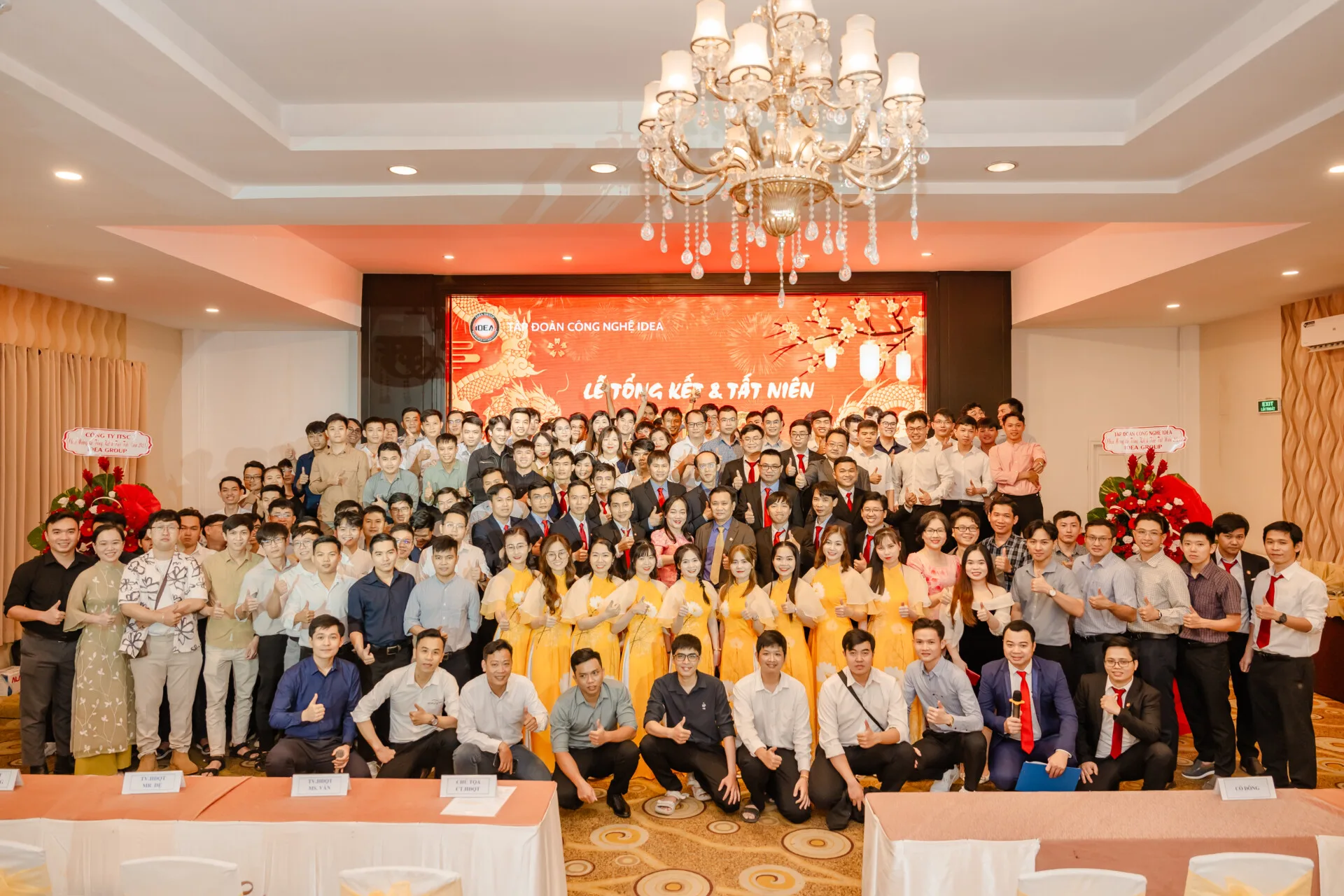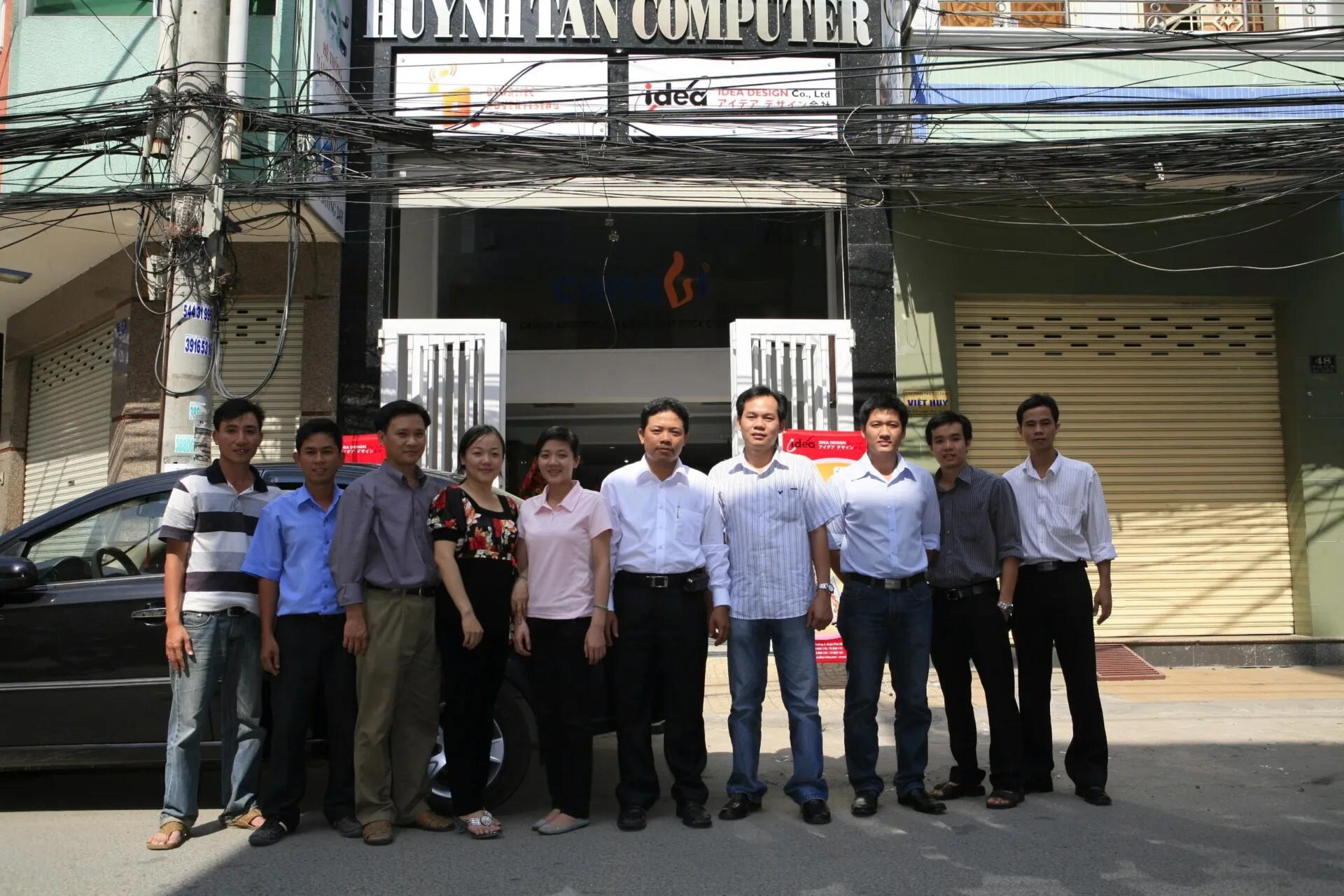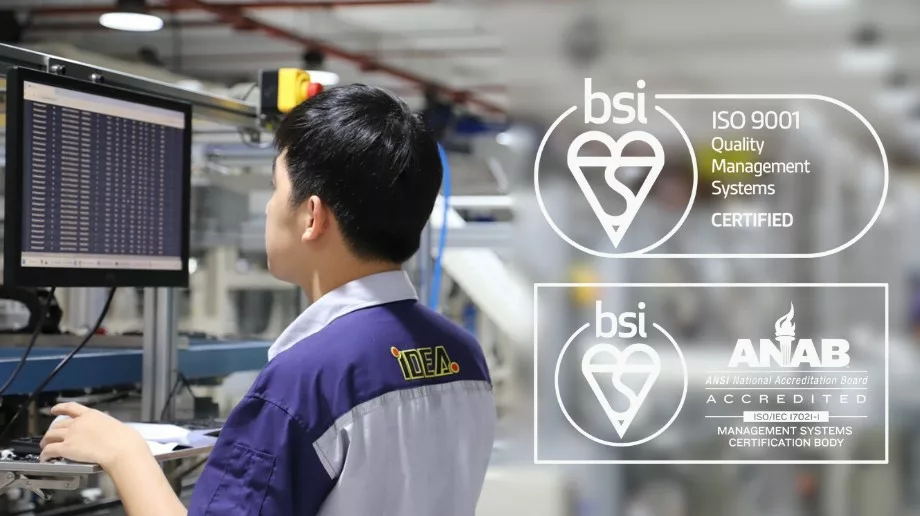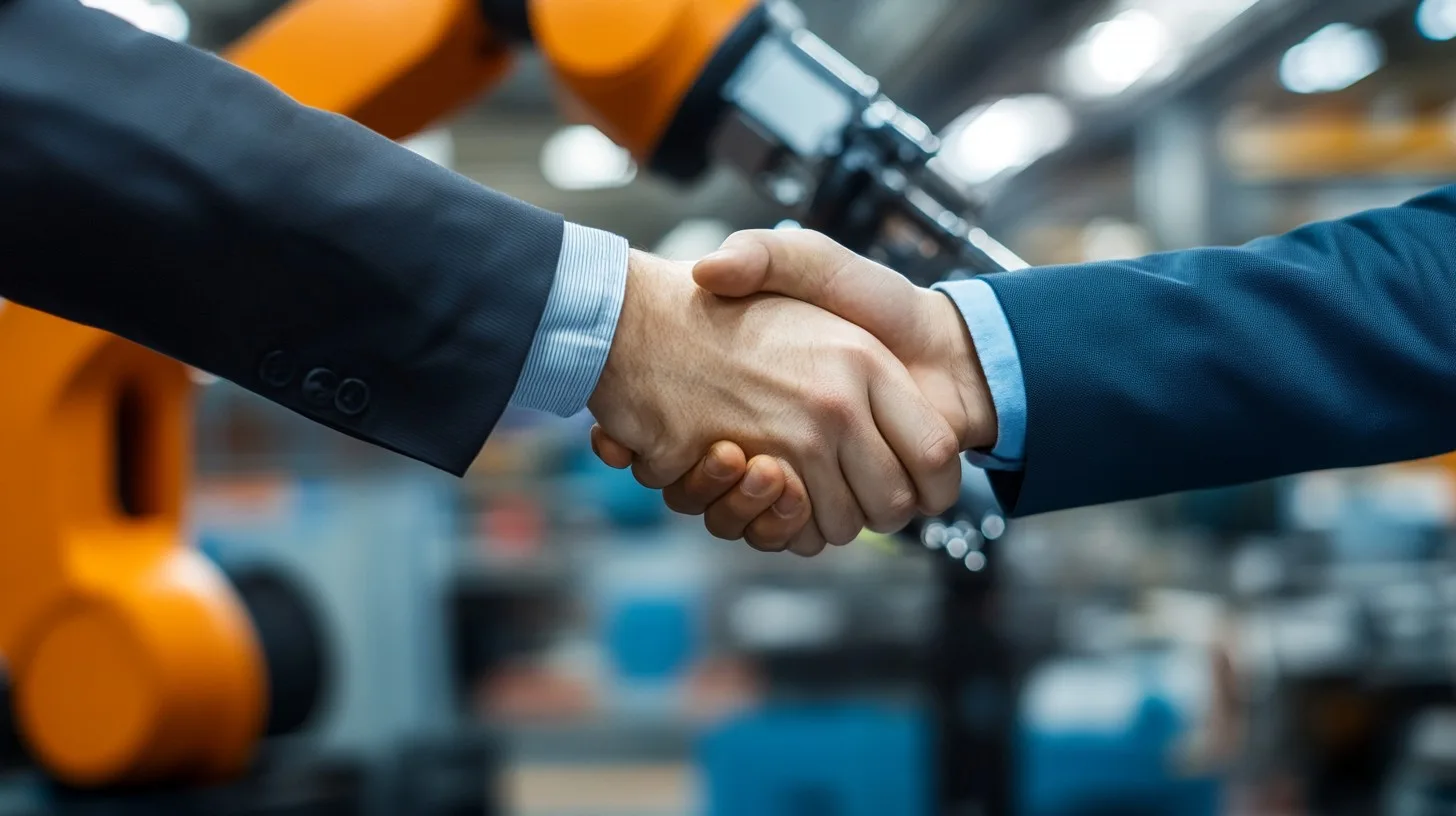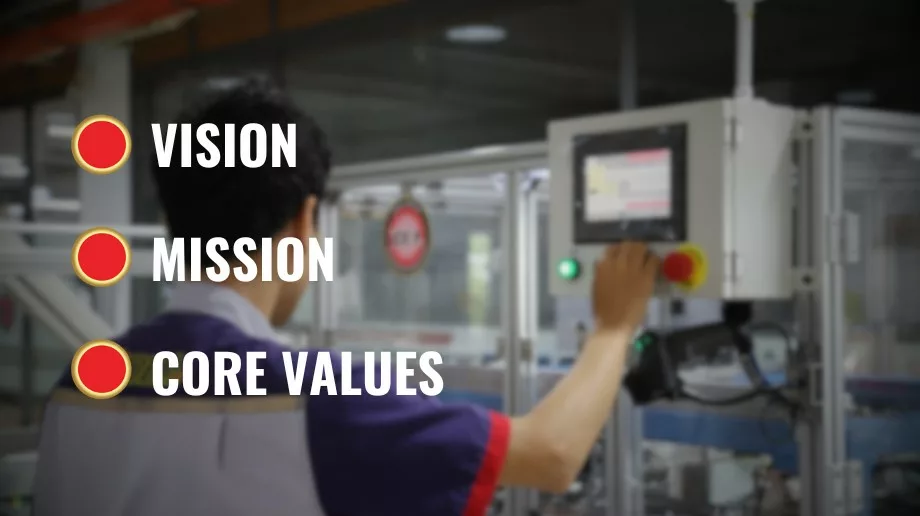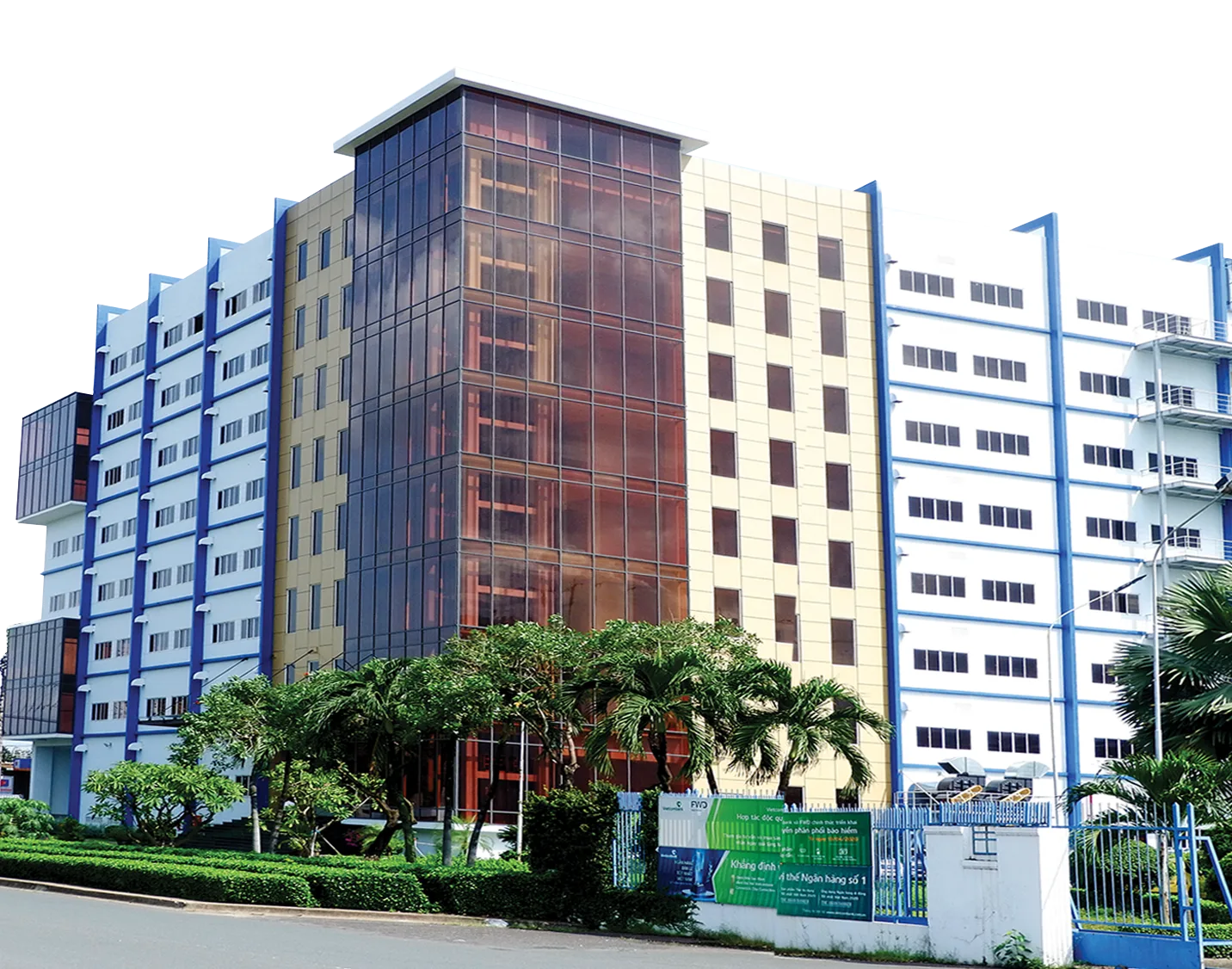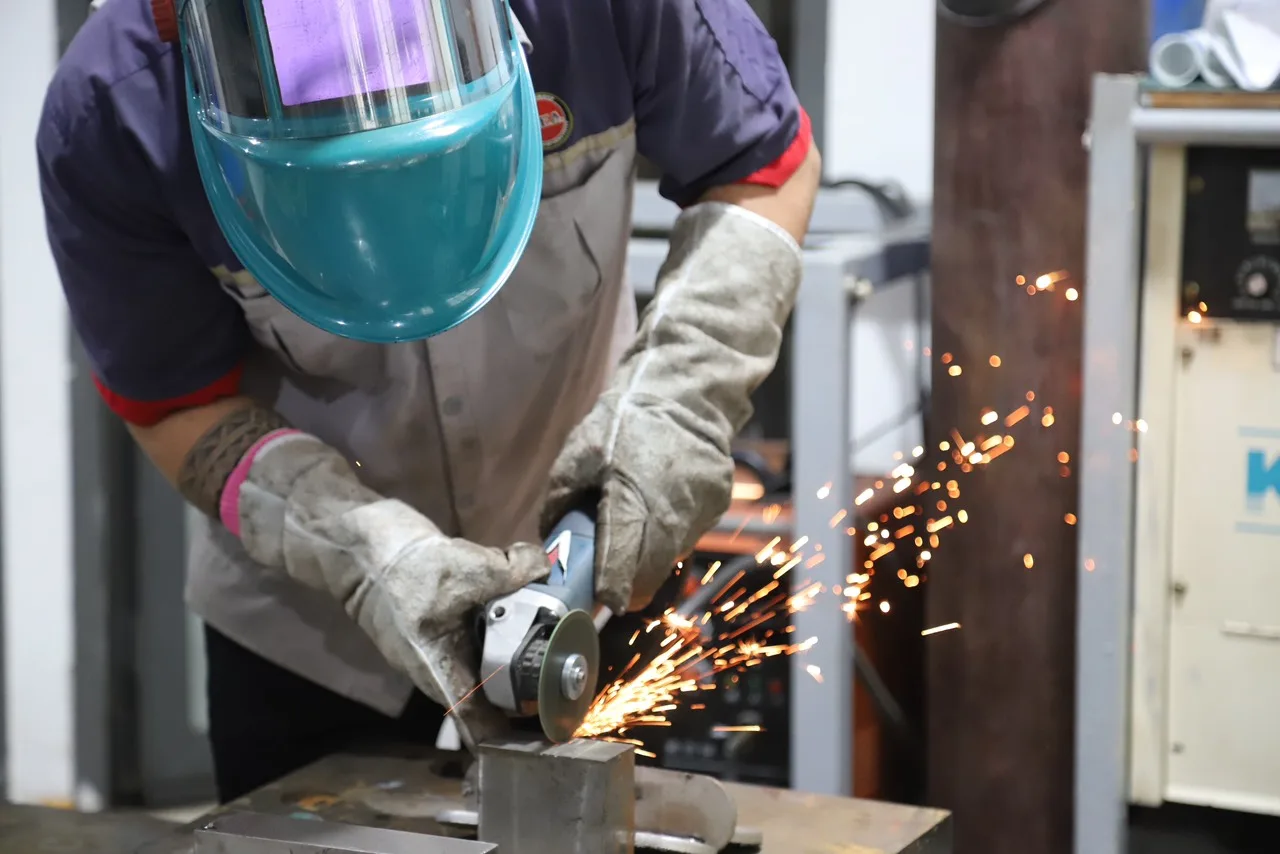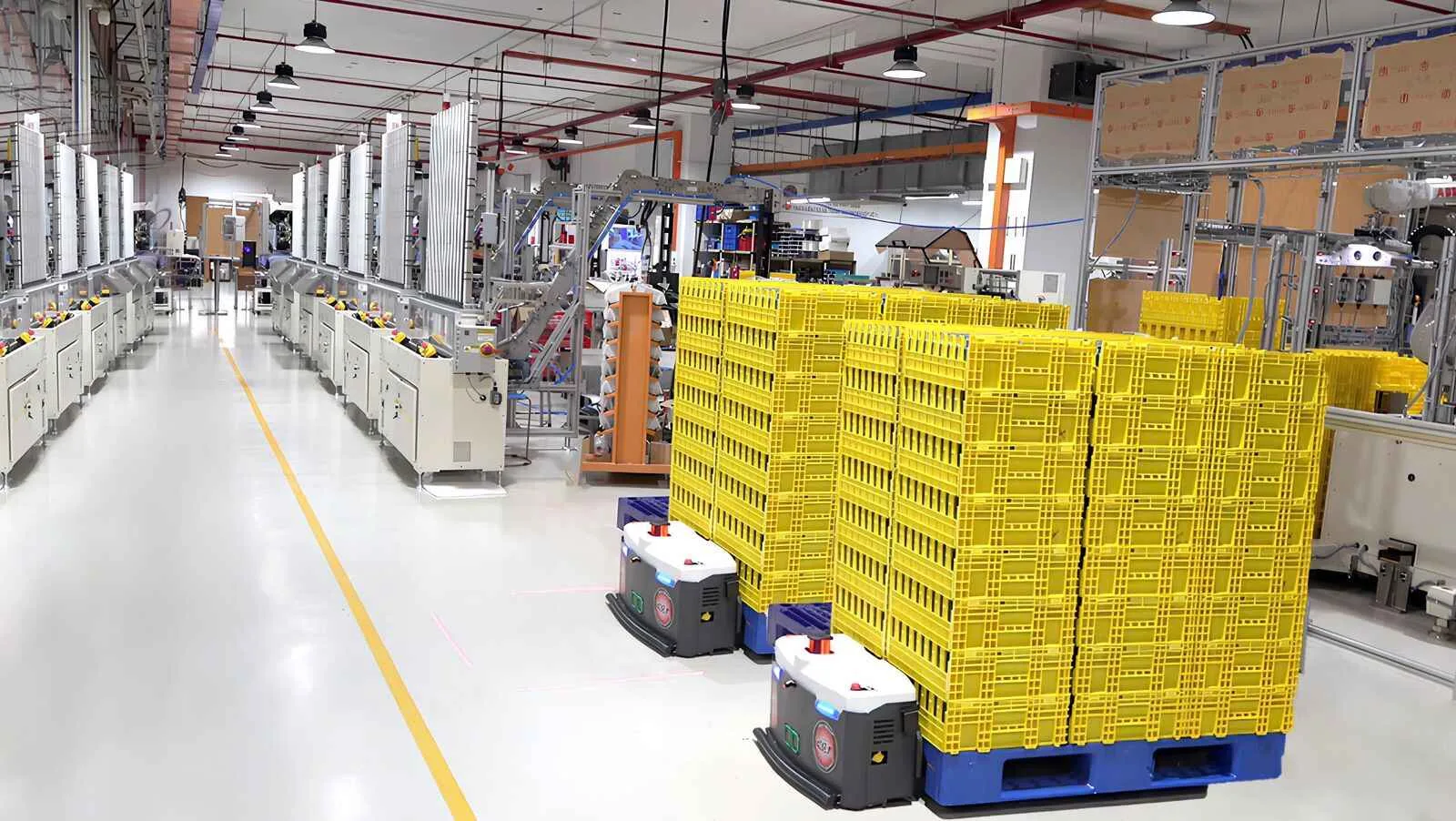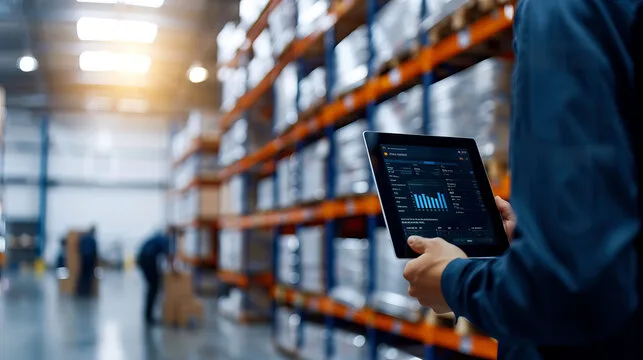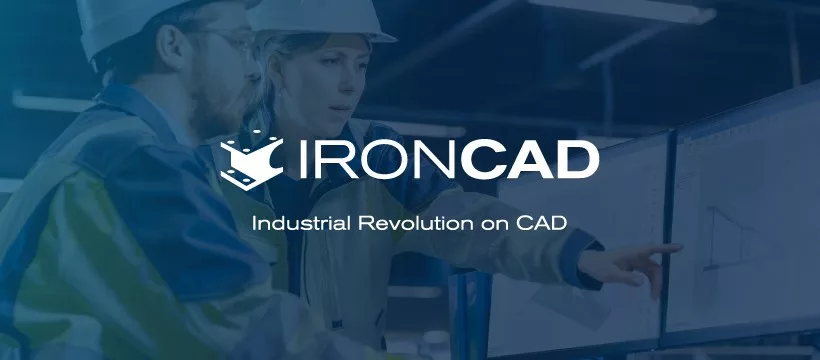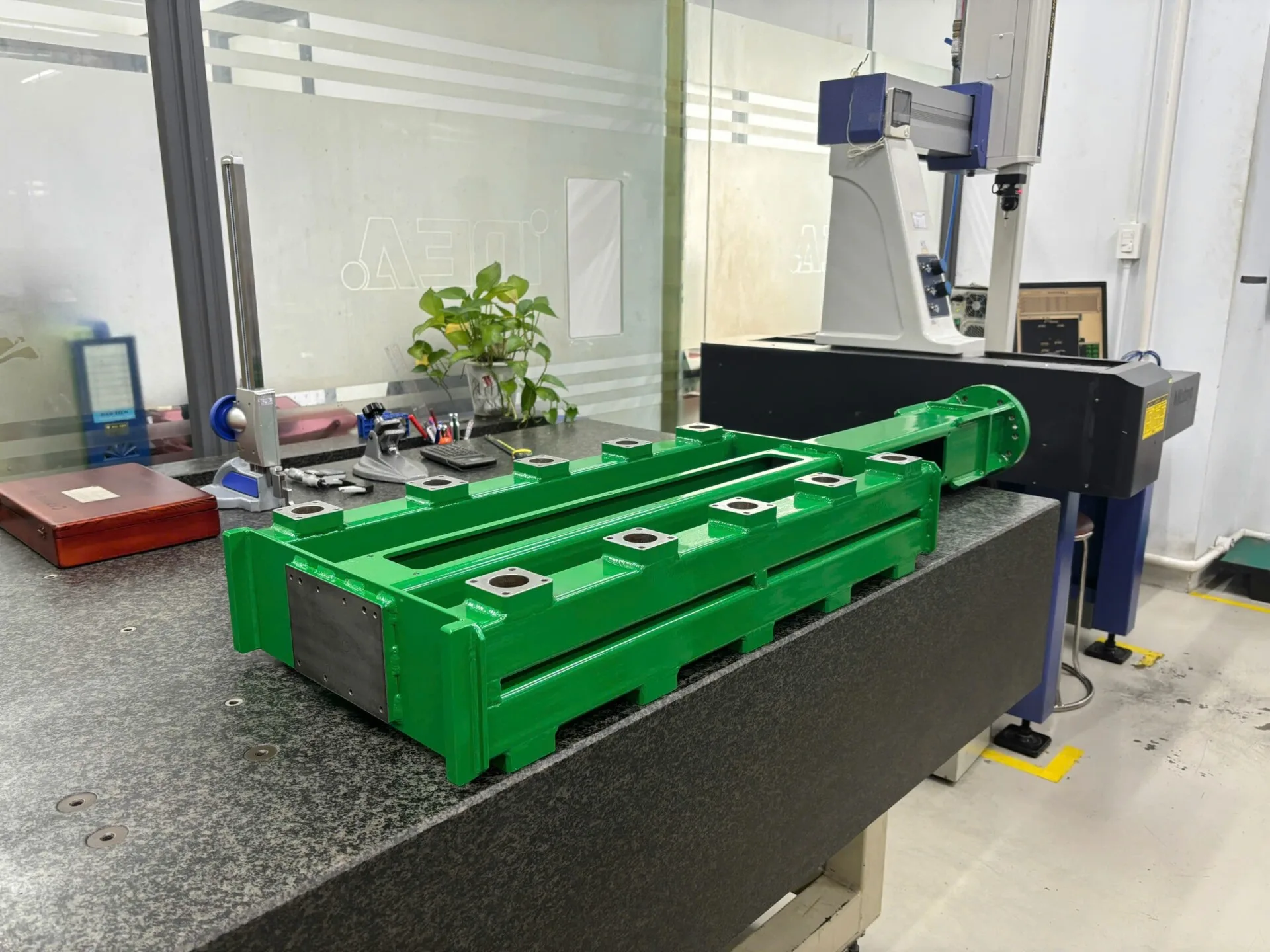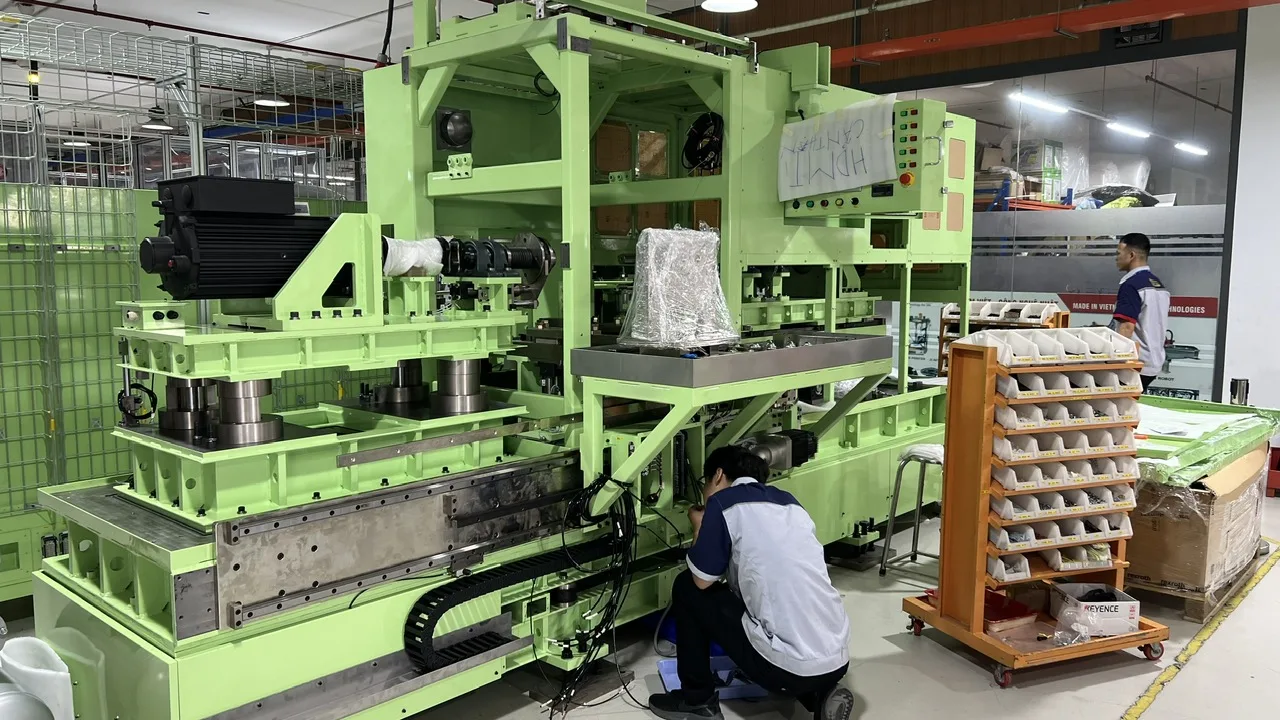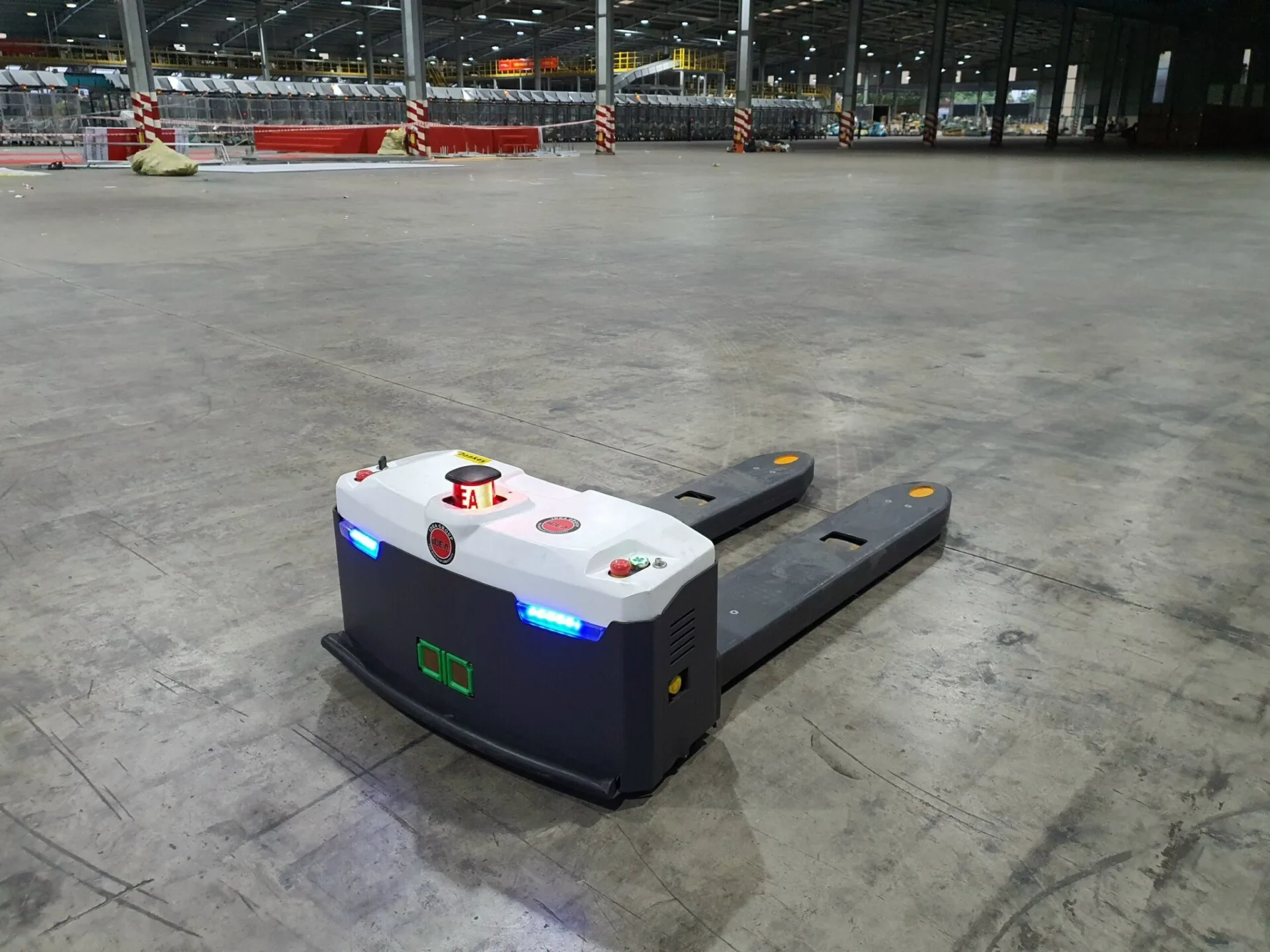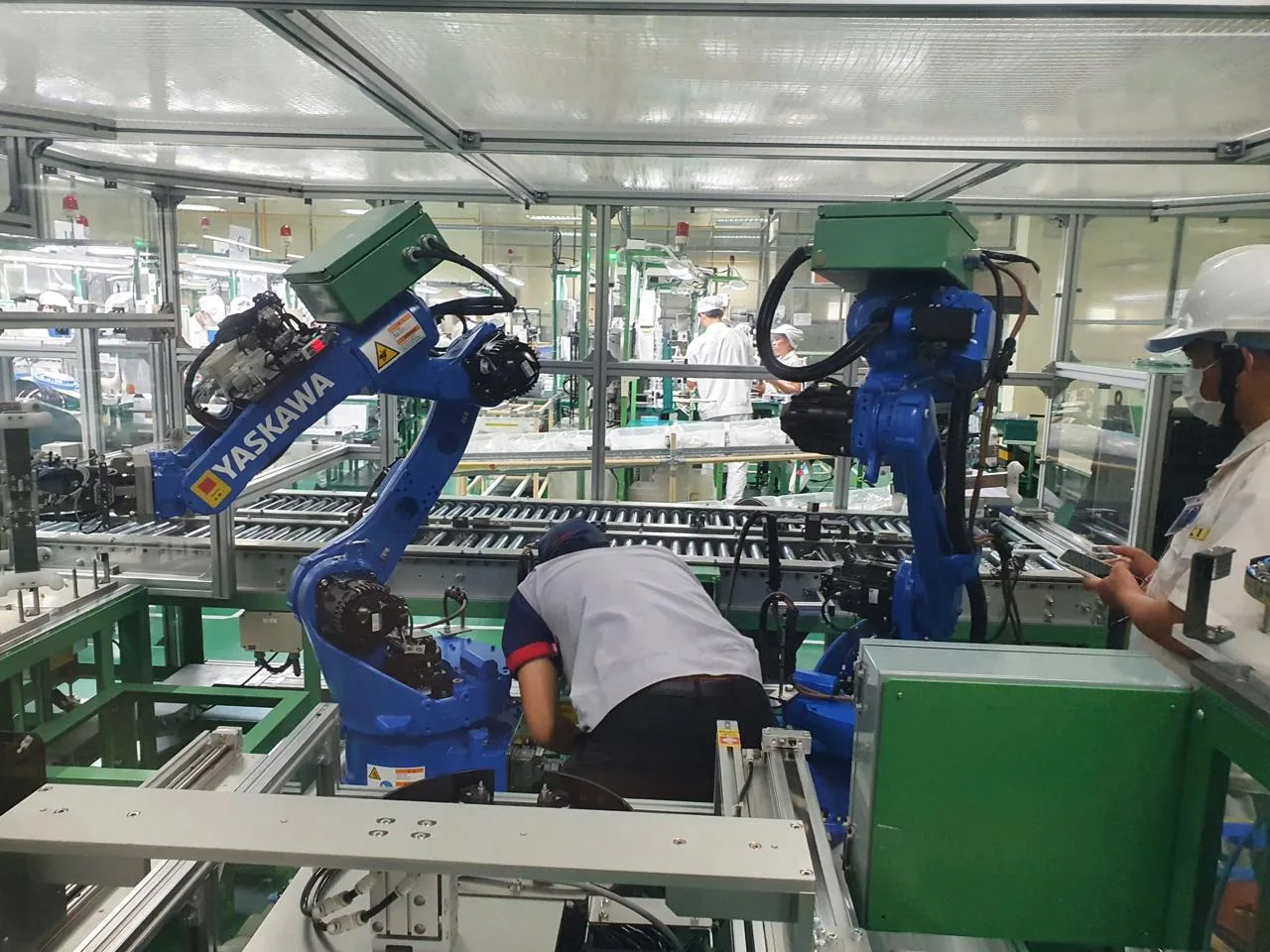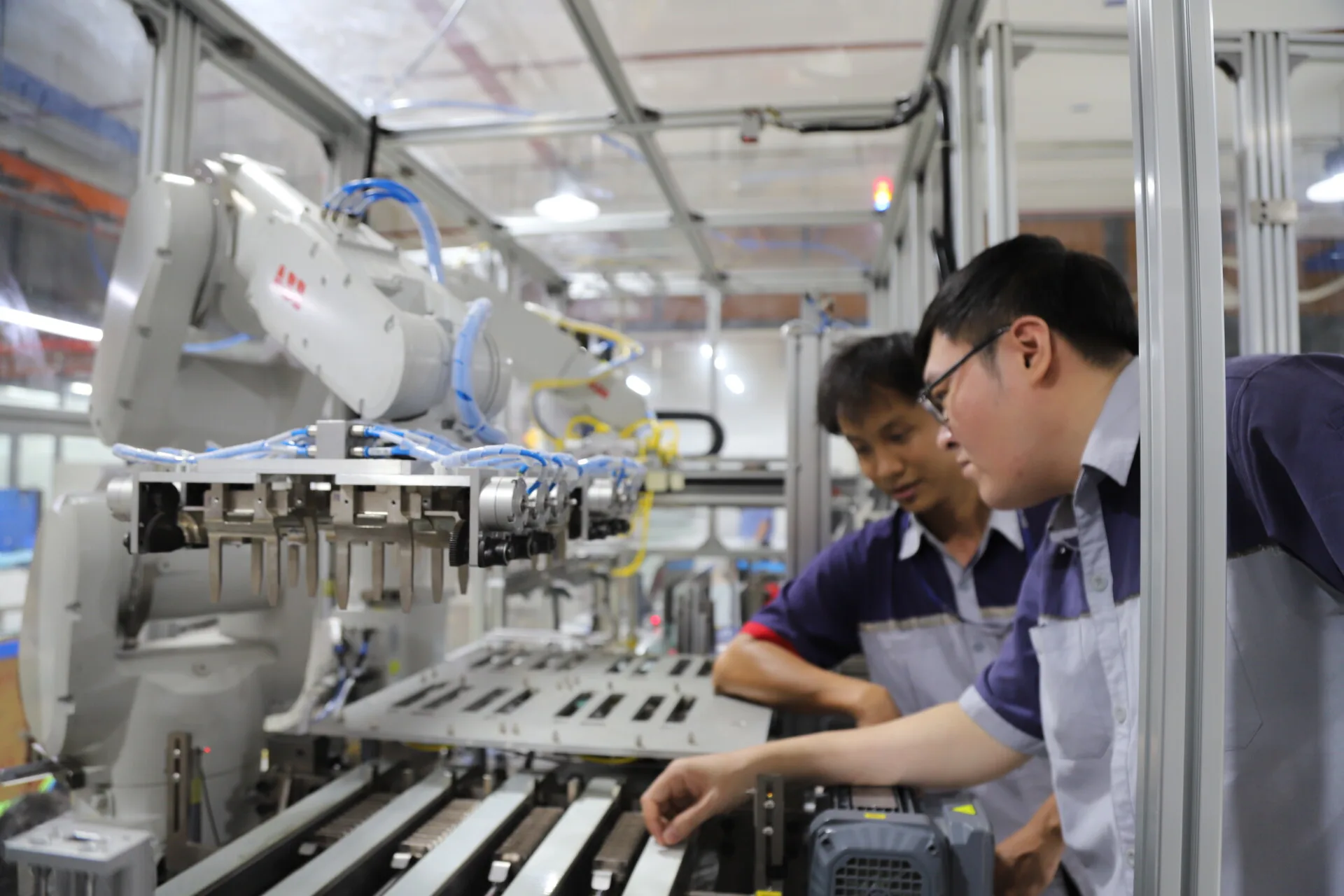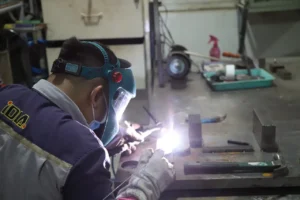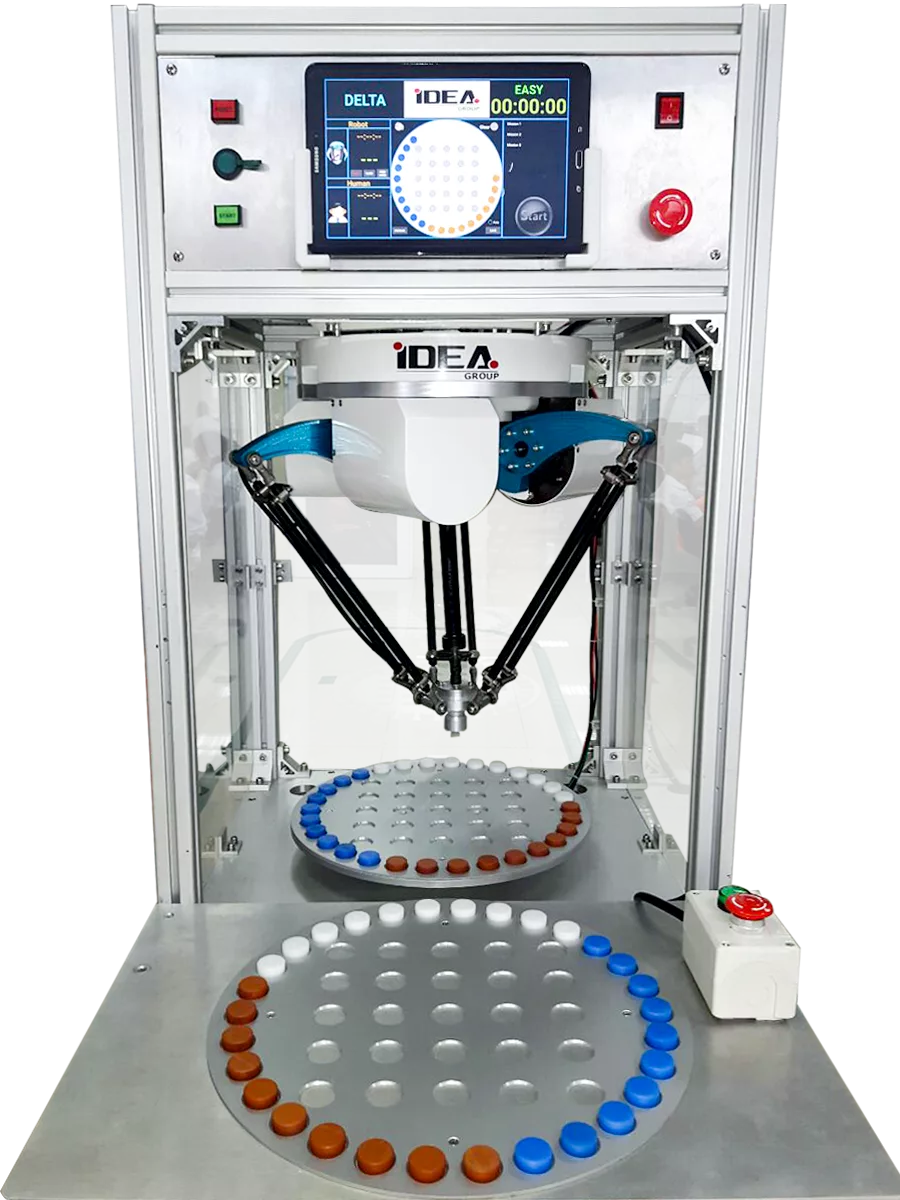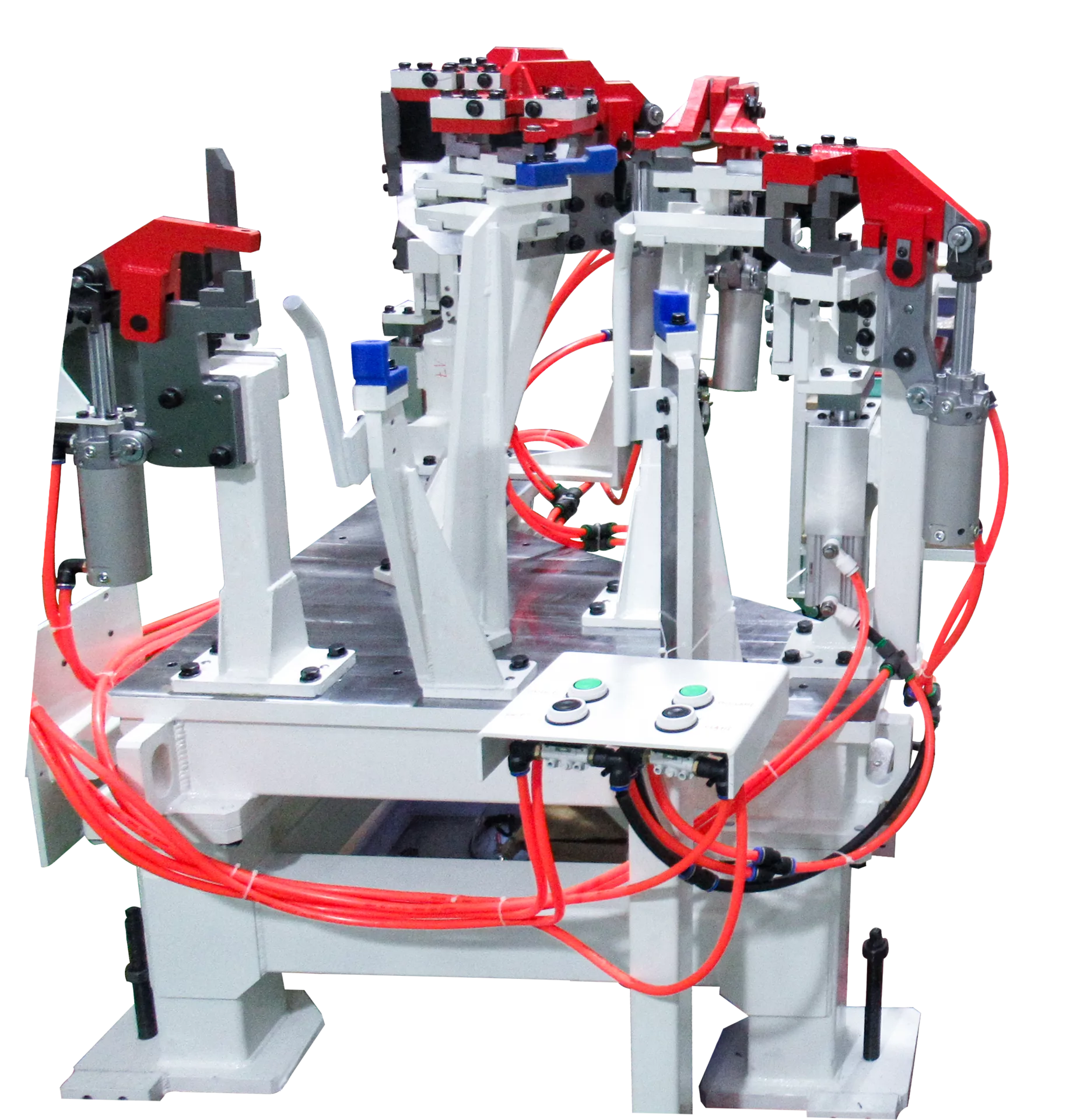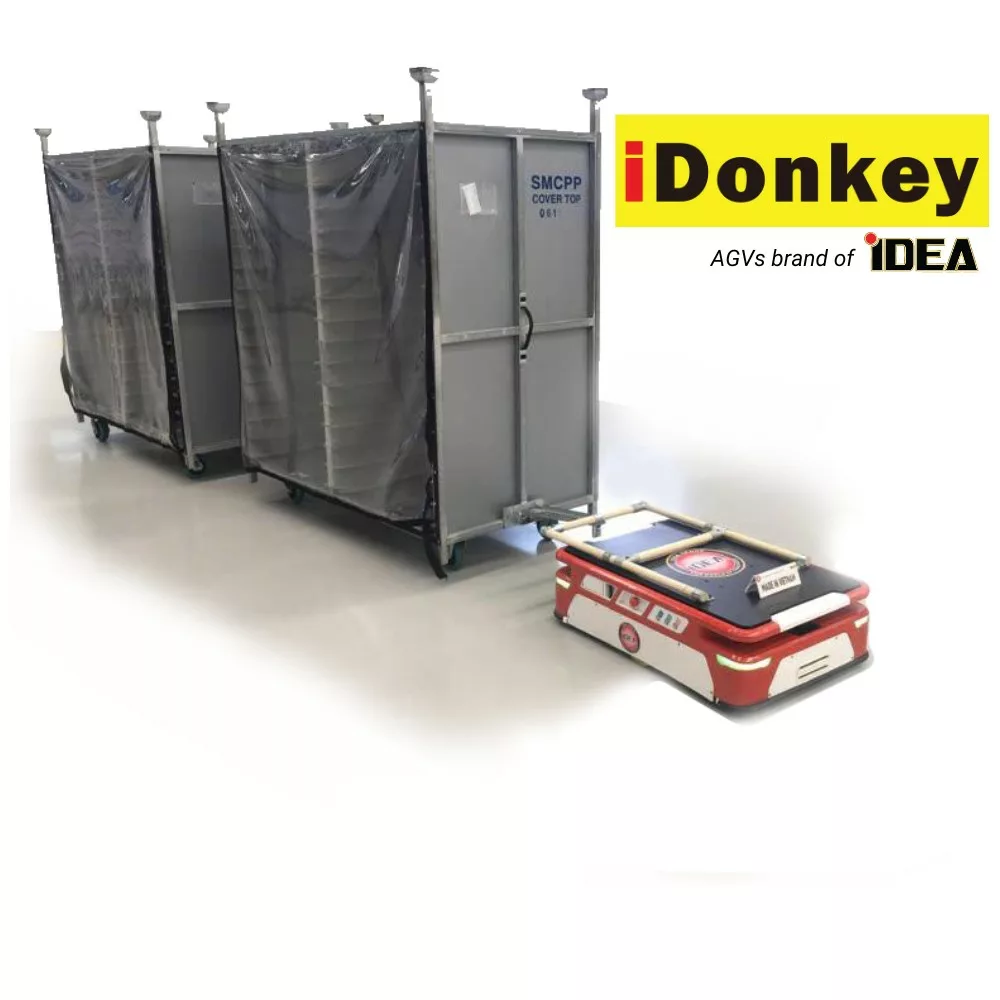I. Giới thiệu về robot công nghiệp
Trong thời đại công nghiệp hiện đại, robot công nghiệp đã trở thành trung tâm của các dây chuyền sản xuất thông minh. Không còn là hình ảnh viễn tưởng, chúng giờ đây là công cụ thực tiễn giúp doanh nghiệp tăng tốc sản xuất, giảm sai sót và tối ưu chi phí. Với khả năng làm việc liên tục, học hỏi và phối hợp linh hoạt với con người, robot đang góp phần nâng cao hiệu quả, ổn định chất lượng và cải thiện môi trường lao động. Việc hiểu rõ lịch sử và xu hướng phát triển của công nghệ này là chìa khóa để xây dựng chiến lược tự động hóa bền vững trong tương lai.
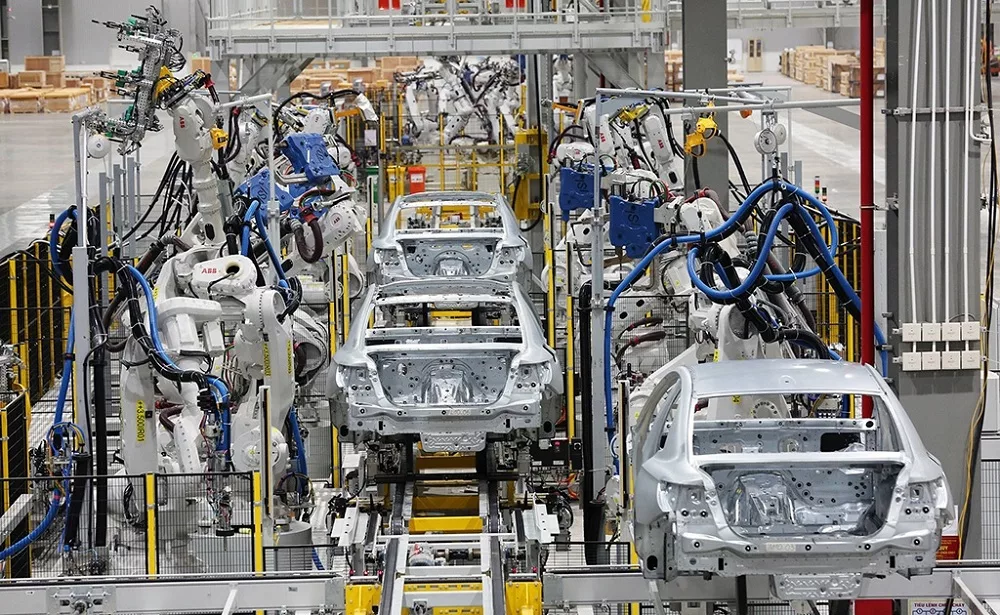
II. Lịch sử hình thành và phát triển robot công nghiệp
1. Những năm 1950–1960: George Devol – Người đặt nền móng cho robot công nghiệp hiện đại
George Charles Devol Jr. (1912–2011) là một nhà phát minh người Mỹ, được mệnh danh là “Ông tổ của người máy”. Vào năm 1954, ông đã nộp đơn xin cấp bằng sáng chế cho một thiết bị có tên “Programmed Article Transfer”, đặt nền móng cho khái niệm Universal Automation, sau này được gọi là Unimate – robot công nghiệp đầu tiên trên thế giới
Điều đặc biệt là vào những năm 1940, Devol không hề nghĩ đến robot. Ông tập trung vào các thiết bị ghi âm từ tính và các hệ thống điều khiển tự động. Tuy nhiên, với tầm nhìn vượt thời đại, ông nhận ra tiềm năng của tự động hóa trong sản xuất và quyết định phát triển một cánh tay máy có thể lập trình được. Sáng chế này đã được cấp bằng vào năm 1961 và trở thành nền tảng cho ngành công nghiệp robot hiện đại.
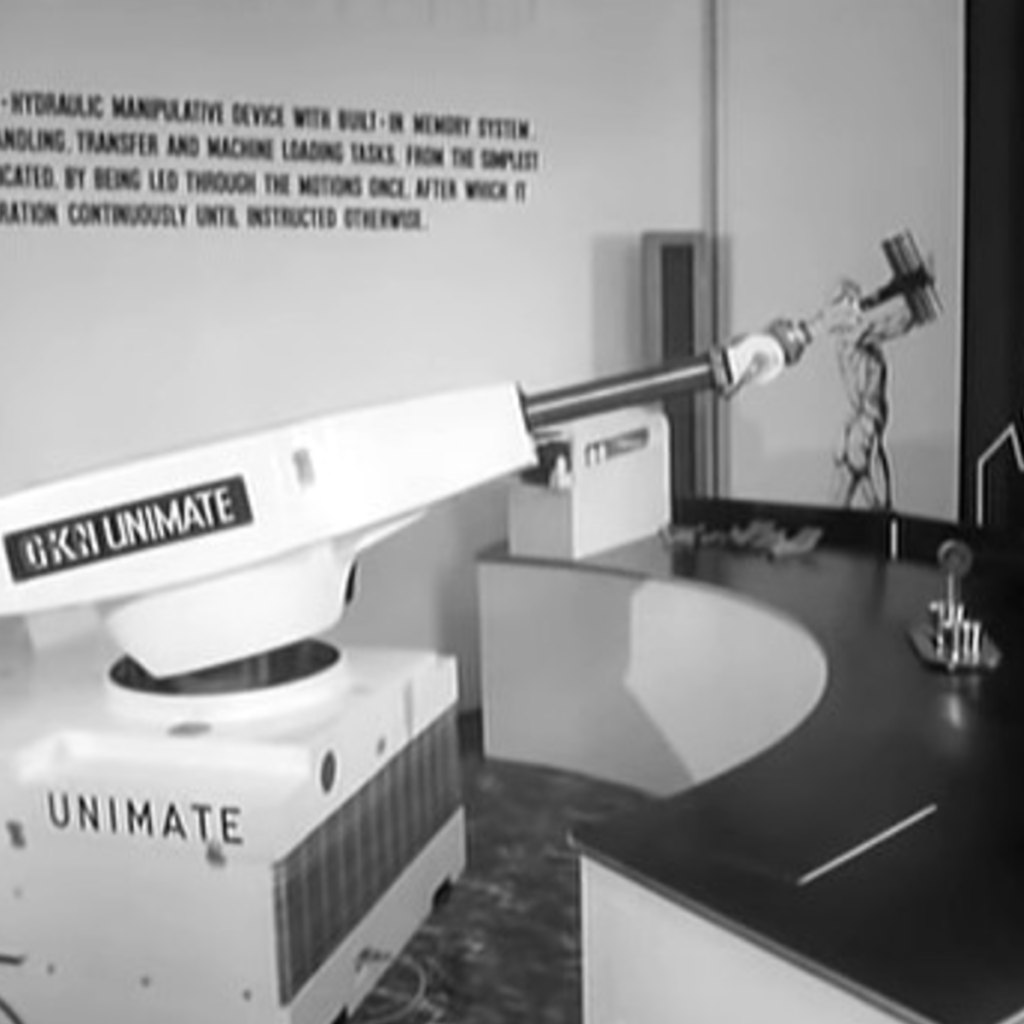
2. Thập niên 1970–1980: Robot bước vào dây chuyền sản xuất
Trong giai đoạn này, robot công nghiệp bắt đầu chuyển mình từ phòng thí nghiệm ra thực tế sản xuất, đánh dấu bước ngoặt lớn trong ngành tự động hóa toàn cầu.
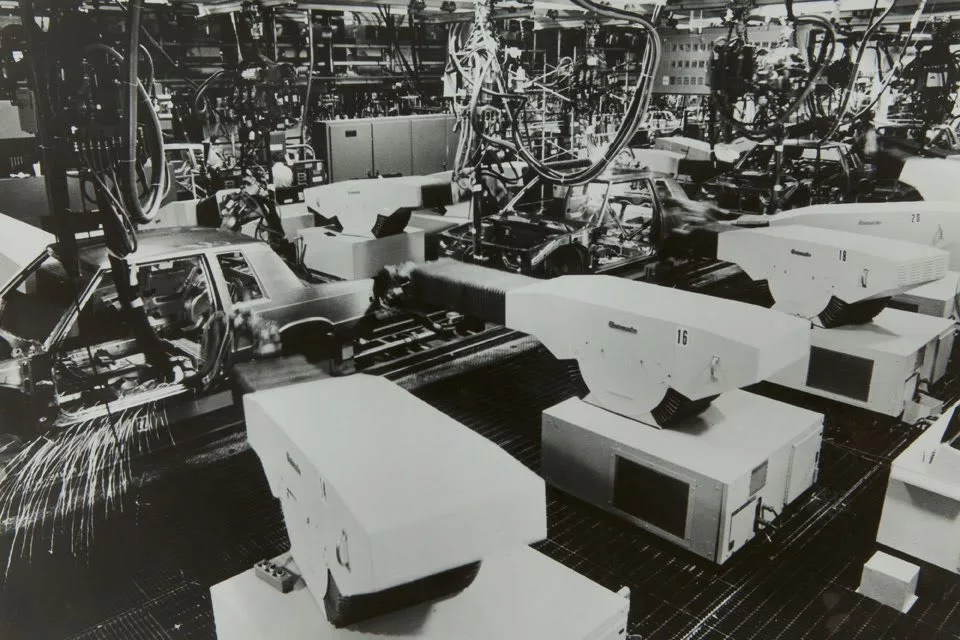
KUKA – Người tiên phong tại châu Âu
Năm 1973, KUKA – một công ty công nghệ đến từ Đức – đã phát triển robot công nghiệp đầu tiên của châu Âu mang tên Famulus. Đây là robot đầu tiên trên thế giới có 6 trục điều khiển điện, cho phép thực hiện các chuyển động linh hoạt tương tự cánh tay con người. Famulus nhanh chóng được ứng dụng trong các dây chuyền hàn tự động cho Daimler-Benz, mở ra kỷ nguyên mới cho ngành sản xuất ô tô tại châu Âu.
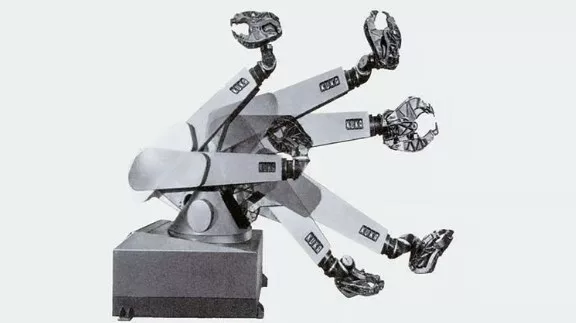
Fanuc và Yaskawa – Làn sóng robot hóa tại Nhật Bản
Tại Nhật Bản, Fanuc và Yaskawa nổi lên như những “gã khổng lồ” trong lĩnh vực robot công nghiệp. Fanuc bắt đầu phát triển robot từ năm 1974, tập trung vào các ứng dụng gia công CNC và lắp ráp điện tử. Trong khi đó, Yaskawa – với dòng robot Motoman – đã tạo ra bước đột phá trong lĩnh vực hàn hồ quang và xử lý vật liệu, giúp các nhà máy Nhật Bản đạt năng suất vượt trội và chất lượng ổn định.
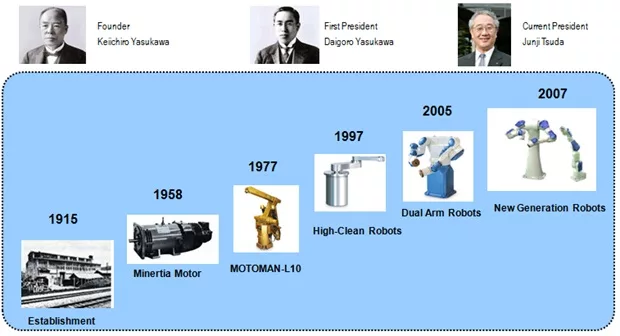
ABB – Đưa robot vào sản xuất quy mô lớn
ABB (Thụy Sĩ) cũng không đứng ngoài cuộc. Họ phát triển các dòng robot IRB đầu tiên vào cuối thập niên 1970, chuyên dùng trong hàn điểm và sơn tự động. ABB nhanh chóng trở thành đối tác chiến lược của nhiều hãng sản xuất lớn tại châu Âu và Bắc Mỹ.
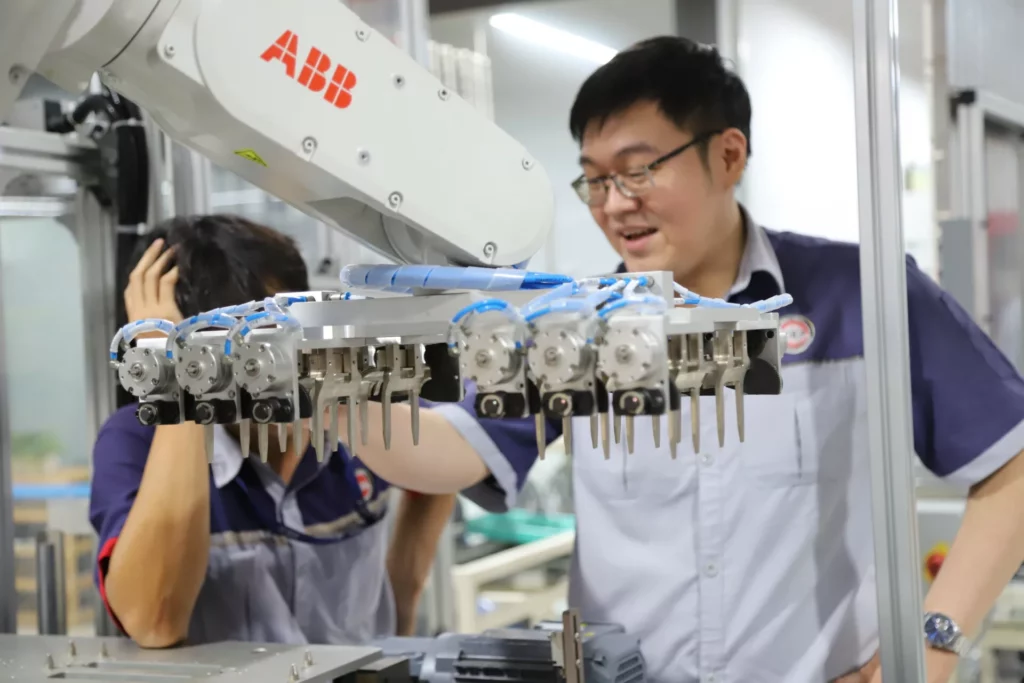
3. Thập niên 1990–2000: Bùng nổ công nghệ và tự động hóa
Sự phát triển của vi xử lý, cảm biến và phần mềm điều khiển giúp robot trở nên thông minh hơn, có khả năng thực hiện các nhiệm vụ phức tạp với độ chính xác cao.
4. Từ 2010 đến nay: Robot thông minh và kết nối
Bước vào thập niên 2010, robot công nghiệp không chỉ đơn thuần là thiết bị cơ khí mà đã trở thành một phần của hệ sinh thái sản xuất thông minh. Sự kết hợp giữa AI (Trí tuệ nhân tạo), IoT (Internet vạn vật) và Big Data đã giúp robot có khả năng:
- Phân tích dữ liệu sản xuất theo thời gian thực
- Tự học từ quy trình vận hành
- Tối ưu hóa hiệu suất và giảm thiểu lỗi
Tích hợp với hệ thống quản lý sản xuất
Robot hiện đại được kết nối chặt chẽ với các hệ thống điều hành và quản lý như:
- ERP (Enterprise Resource Planning): Giúp đồng bộ hóa dữ liệu sản xuất với các phòng ban như kế toán, kho vận, nhân sự, và quản lý đơn hàng.
- MES (Manufacturing Execution System): Cho phép giám sát trực tiếp quá trình sản xuất, theo dõi hiệu suất máy móc, và phân tích chất lượng sản phẩm.
- SCADA (Supervisory Control and Data Acquisition): Hệ thống giám sát và điều khiển từ xa, giúp quản lý trạng thái hoạt động của robot và thiết bị công nghiệp trong thời gian thực.
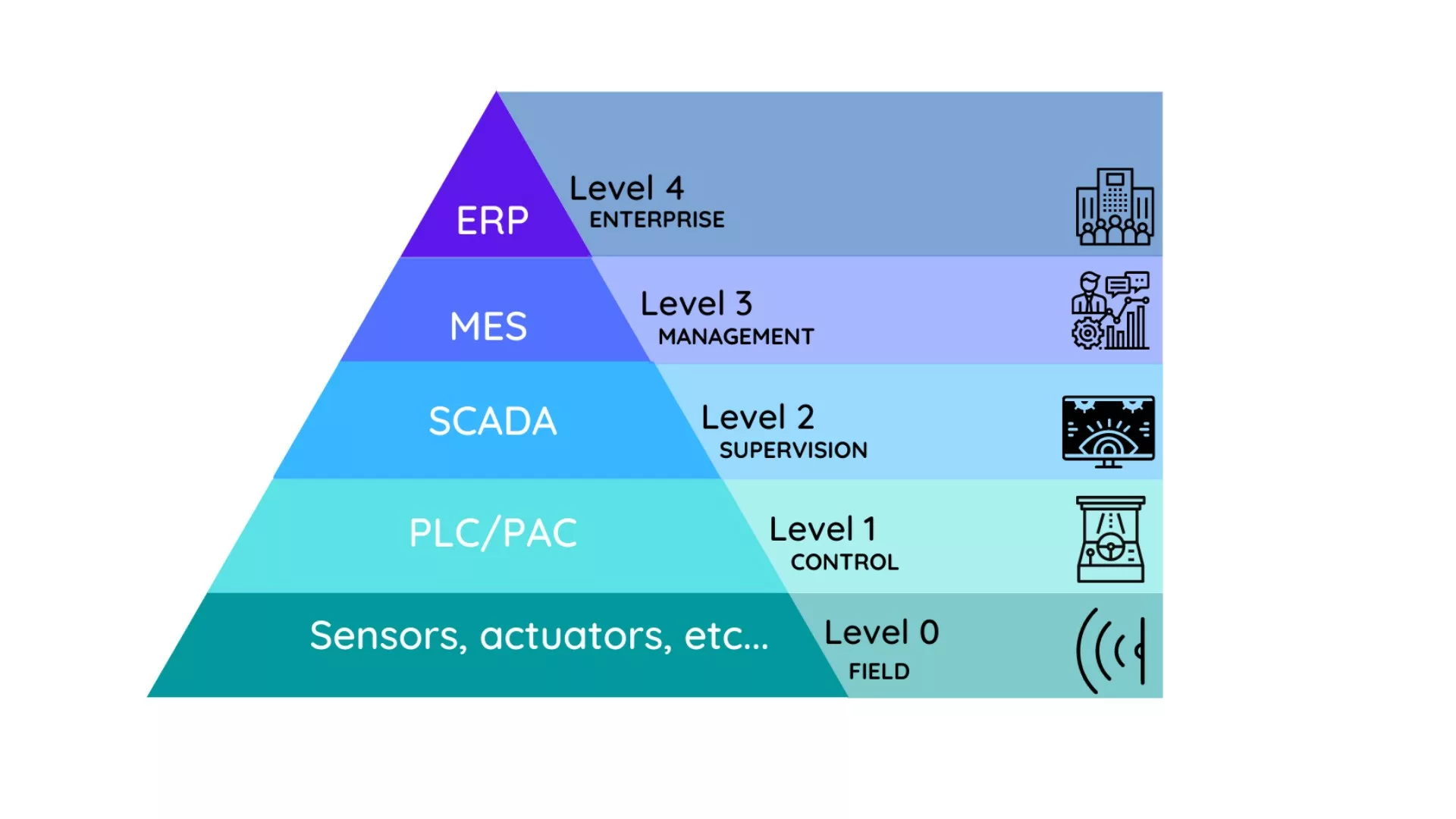
Vai trò trong nhà máy thông minh
Trong mô hình Smart Factory, robot không chỉ thực hiện nhiệm vụ mà còn giao tiếp với các hệ thống khác, đưa ra quyết định dựa trên dữ liệu, và phối hợp với con người thông qua robot cộng tác (Cobots). Điều này giúp doanh nghiệp:
- Tăng tính linh hoạt trong sản xuất
- Giảm thời gian chuyển đổi sản phẩm
- Nâng cao khả năng phản ứng với biến động thị trường
III. Các cột mốc quan trọng trong hành trình phát triển
Những phát minh mang tính cách mạng
- Unimate (1961): Robot đầu tiên được ứng dụng trong sản xuất.
- SCARA Robot (1981): Robot chuyên dụng cho lắp ráp điện tử.
- Cobots (2010s): Robot cộng tác có thể làm việc an toàn bên cạnh con người.
Sự ra đời của các hãng robot công nghiệp lớn
- ABB Robotics – Thụy Sĩ
- Fanuc – Nhật Bản
- KUKA – Đức
- Yaskawa – Nhật Bản
Ứng dụng thực tế trong các ngành công nghiệp
- Ô tô: Hàn, sơn, lắp ráp linh kiện
- Điện tử: Gắp – đặt linh kiện, kiểm tra chất lượng
- Thực phẩm: Đóng gói, phân loại sản phẩm
- Chế tạo máy: Gia công CNC, vận chuyển vật liệu
IV. Tương lai của robot công nghiệp trong tự động hóa
Robot cộng tác (Cobots) và xu hướng mới
Cobots đang trở thành xu hướng nhờ khả năng làm việc linh hoạt, dễ lập trình và an toàn khi tương tác với con người. Không giống như robot truyền thống cần không gian riêng biệt, cobots có thể làm việc trực tiếp bên cạnh con người, hỗ trợ các công việc lặp đi lặp lại, nâng cao hiệu suất và giảm rủi ro lao động. Robot hiện đại không chỉ thực hiện nhiệm vụ cơ học mà còn được tích hợp với:
- AI: giúp robot học hỏi, phân tích và ra quyết định thông minh.
- IoT: kết nối robot với các thiết bị khác trong nhà máy.
- Big Data: xử lý lượng lớn dữ liệu sản xuất để tối ưu hóa quy trình.
- ERP, MES, SCADA: các hệ thống quản lý sản xuất và giám sát giúp robot hoạt động đồng bộ với toàn bộ dây chuyền, từ kế hoạch sản xuất đến kiểm tra chất lượng.

Nhà máy thông minh và mô hình “tắt đèn”
Một trong những biểu tượng của tương lai sản xuất là “nhà máy tắt đèn” (lights-out factory) – nơi toàn bộ quy trình sản xuất được vận hành hoàn toàn bằng robot và hệ thống tự động, không cần ánh sáng, không cần con người trực tiếp vận hành. Trong mô hình này:
- Robot thực hiện mọi công đoạn từ nguyên liệu đến thành phẩm.
- Hệ thống SCADA giám sát trạng thái máy móc theo thời gian thực.
- MES điều phối sản xuất theo đơn hàng và năng lực máy.
- ERP kết nối dữ liệu sản xuất với các phòng ban như kho, kế toán, và logistics.
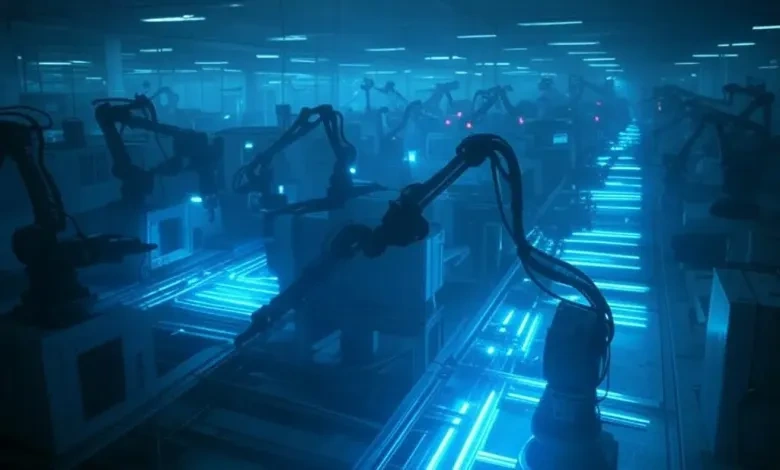
Lợi ích vượt trội
- Hoạt động liên tục 24/7 mà không cần nghỉ.
- Giảm chi phí vận hành và nhân công.
- Tăng độ chính xác và chất lượng sản phẩm.
- Phản ứng nhanh với biến động thị trường nhờ sản xuất linh hoạt.
V. Kết luận – Robot công nghiệp và hành trình không ngừng tiến hóa
Từ một cánh tay máy đơn giản đến hệ thống tự động hóa thông minh, robot công nghiệp đã trải qua một hành trình dài đầy sáng tạo và đổi mới. Trong tương lai, robot sẽ không chỉ là công cụ sản xuất mà còn là đối tác chiến lược trong quá trình chuyển đổi số và phát triển bền vững của doanh nghiệp.

